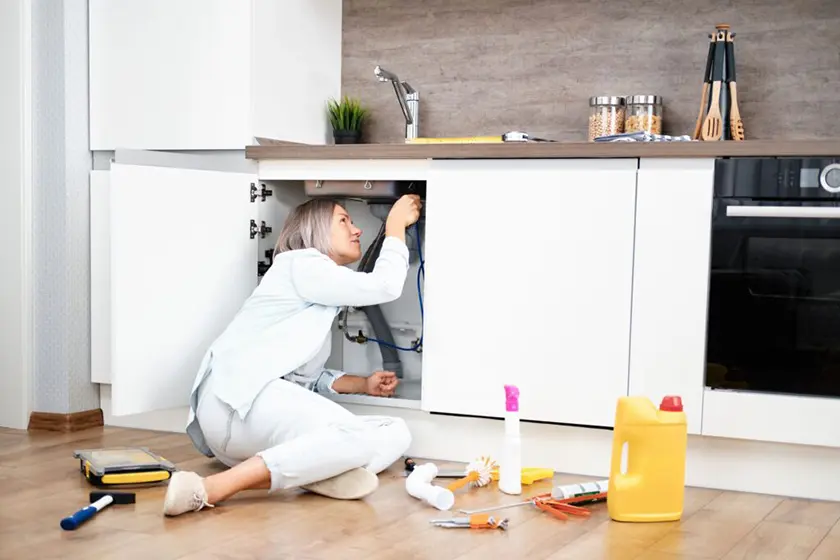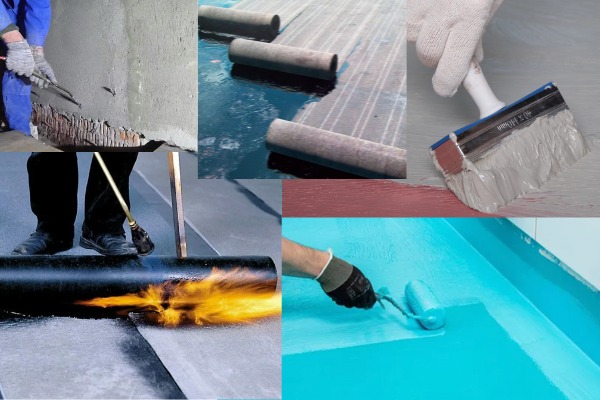As a homeowner, you are responsible for maintaining your home and repairing minor problems before they become costly. Many common home problems can be easily fixed with the right knowledge and tools. These are the essential DIY home repair tips that every homeowner needs to know in order to maintain their home.
1. How to Fix a Leaky faucet
Over time, a dripping tap can waste large amounts of water and raise your utility bills. A worn-out washer inside the faucet is usually to blame. First, turn off the water. Remove the handle, and then unscrew packing nut in order to get at the O-ring or washer. Replace the washer with a brand new one. Reassemble the faucet and turn on the water. This simple fix will save you water and help prevent further damage.
2. Unclogging a Drain
Grease, soap or hair accumulation are the main causes of clogged showers and sinks. Try DIY instead of harsh chemicals. Pour baking soda and vinegar into the drain. Wait 15 minutes and flush with boiling hot water. Use a plunger to clear clogs that are more difficult. Regular maintenance will help to prevent future clogs.
3. How to Repair a Running Toilet
Water is wasted when the toilet runs continuously. This can increase your water bill. A faulty fill valve or flapper is the most common culprit. If the flapper is worn, you can replace it at a hardware shop with a brand new one. Adjust the fill valve if the water level in the tank is too high to prevent excess water from flowing out of the overflow tube. This simple repair can save you money on water.
4. Repairing Holes on Drywall
It is easy to repair small cracks and holes in drywall. Fill in small holes with spackle, smooth out the surface with a putty blade, then let it dry. Sand and paint it after it dries. Cut out a piece of drywall around the hole, place a new patch and secure it with joint paste. Sand it down before painting. This will keep your walls looking polished and clean.
5. How to Fix a stuck or Squeaky door
It can be frustrating to hear squeaky door hinges, but they are easy to fix with some lubricant. Apply WD-40 to the hinges or use petroleum jelly. Open and close the doors a few times in order to spread the lubricant. Check the hinges for loose screws and tighten them if a door is sticking. Sand down any edges that are rubbing against the frame to make the door operate more smoothly.
6. Replace a broken tile
The tiles that are cracked not only look bad, but they can allow moisture into the tile and cause further damage. Remove the grout from around the broken tile using a grout cutter. Remove the broken tile with a grout saw, then clean the area and apply a new adhesive. Install the new tile, let it air dry and then apply grout. This simple fix can enhance the look of your walls or floors with help of Tekno-Step.
7. How to fix a tripped circuit breaker
A tripped circuit breaker could be the cause of a power outage in a certain area of your house. To reset the circuit breaker, go to the electrical panel. Look for the switch that is in the “off” or between “on and “off” positions. Flip the switch to “off”, then flip it back to “on”. The breaker may trip frequently if the circuit is overloaded or there are problems with the wiring.
8. Caulking around Windows and Doors
Caulking that is cracked or old around windows and doors can allow air and moisture in, resulting in higher energy bills as well as possible water damage. Remove the old caulking using a putty blade and thoroughly clean the area. Apply a new bead silicone or latex, and smooth it out with your fingers or a caulk instrument. This simple maintenance improves insulation and prevents leaks.
9. Fixing a Loose cabinet door or handle
Your kitchen or bathroom will look old and worn out if you have loose cabinet doors and handles. Tighten screws on hinges if a door appears loose. To ensure that the screws are tight, if the holes have become brittle over time, insert toothpicks or wood glue into the hole. If your handles are wobbly, you can tighten them or replace the screws for a new look.
10. How to Seal a Cracked driveway
Over time, small cracks can grow and lead to expensive repairs. For minor cracks, thoroughly clean the area and use a concrete crack sealer or asphalt sealing agent to fill in the gaps. It is best to smooth it with a putty blade and allow it to dry before driving on it. Regular maintenance will prevent the formation of larger cracks.
Final Thoughts
Saving money, time and frustration by knowing how to do these simple DIY home repairs is possible. You can avoid costly repairs by tackling minor issues before they become major. Don’t be afraid to ask for professional help when a task is beyond your level of expertise. Keep an stocked toolbox and follow safety rules. You’ll be more confident in managing your home maintenance and making repairs when necessary if you have these skills.


